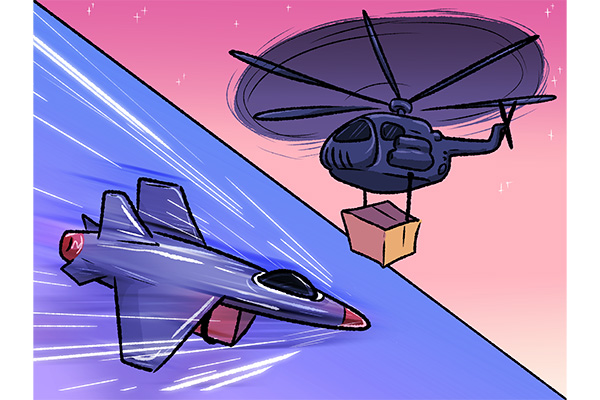UT-Austin students and faculty will lead two out of five teams participating in NASA’s University Leadership Initiative, which provides funding for university research teams to work on projects for three to four years.
The first project, led by researchers at UT’s Oden Institute for Computational Engineering and Sciences and engineers in the Cockrell School of Engineering, will focus on establishing an algorithm foundation to develop advanced air mobility systems for autonomous cargo, said Ufuk Topcu, the lead investigator for the project, in an email.
“Autonomous means that they make their own decisions, and it’s not remote-controlled,” said Karen Willcox, the director of the Oden Institute who is also working on the project. “Imagine a future when you (open) your Amazon app and you order whatever it is you need … and an autonomous aerial vehicle plays some role in the delivery from the warehouse … to your front door.”
Topcu and Willcox both said the COVID-19 pandemic has increased the demand for deliveries. Topcu said the pandemic has highlighted the need for supply chains that are resilient against systemic disruptions and major shifts in demand.
“Autonomous, aerial cargo operations have the unique potential to enable the necessary agility,” Topcu said in an email.
Willcox said if this project is successful, it could potentially create more jobs requiring different skill sets.
“That means we’ve got to go all the way back to our K-12 education … that we’ll be working with and thinking about the skills in robotics, unmanned vehicles and the computing skills that we need to equip students with so that they are prepared for these new jobs,” Willcox said.
The second project, Full Airframe Sensing Technology, will focus on putting various sensors on the inside of hypersonic vehicles. Hypersonic vehicles are vehicles that can travel five times faster than the speed of sound, such as jets, spacecraft and missiles.
The sensors will analyze the vehicle’s aerodynamic changes, the forces acting upon the vehicle and its deformations, such as when an aircraft’s wings bend, aerospace engineering professor Jayant Sirohi said. Using the data the sensors collect, the researchers will create a more robust flight control algorithm, which will better protect and control the vehicle, Sirohi said.
Sirohi said that it felt good knowing that their project was selected for the NASA program.
“(NASA said) they really liked it because it’s (a) completely out-of-the-box approach (to) a new idea,” Sirohi said. “So that made us feel even better that we are really advancing the state of the art.”
The other three teams are made up of students and faculty from Pennsylvania State University, the University of California-San Diego and Purdue University, NASA announced on Jan. 8.
Sirohi said the team will start the first set of experiments soon and will use machine learning to analyze the relationship between the deformation of the vehicle and the force applied onto it using a 40% scale model of a hypersonic vehicle.
Marc Eitner, an aerospace engineering graduate student, said this project could potentially be utilized with other high-speed vehicles in the future.
“It is not even clear whether or not this is mathematically possible to get to the outcome that we hope,” Eitner said. “Because of this novelty, many people are excited about how this turns out.”





















